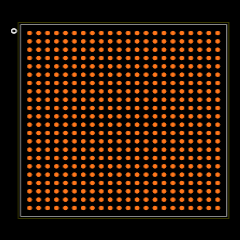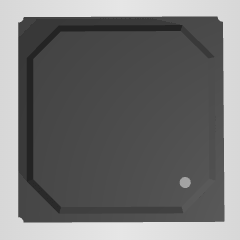FPGAs EP3C40F484C8N Datasheet, Applications and Features
2025-05-20 09:55:42 1009
EP3C40F484C8N Description
The EP3C40F484C8N is a low-power, mid-density FPGA from Intel’s Cyclone III family, offering 39,600 logic elements, embedded memory, and flexible I/O capabilities in a 484-pin FineLine BGA package. It is designed for cost-sensitive applications that require balanced performance and low power consumption.
EP3C40F484C8N Features
39,600 logic elements (LEs)
1,161 Kbits of embedded RAM
Up to 295 user I/O pins
4 integrated PLLs
484-ball FineLine BGA package
Commercial temperature grade (0°C to 85°C)
Speed grade: C8
Supports multiple I/O standards including LVTTL, LVCMOS, and LVDS
Compatible with passive serial, active serial, and JTAG configuration
EP3C40F484C8N Applications
Industrial automation control systems
Medical imaging and diagnostics equipment
Consumer electronics (multimedia processing)
Communication infrastructure (data handling, packet processing)
Automotive infotainment and control modules
Test and measurement instruments
EP3C40F484C8N CAD Model
Footprint

3D Model


EP3C40F484C8N Alternatives
EP3C25F324C8N – Lower density Cyclone III FPGA in a smaller package
EP4CE40F23C8N – Cyclone IV E device with similar logic capacity but enhanced features
XC6SLX45-3FGG484C – Xilinx Spartan-6 FPGA with similar logic and I/O
LFE3-70EA-6FN672C – Lattice ECP3 FPGA with higher density and SERDES
10CL040YU484C8G – Intel Cyclone 10 LP device with comparable resources and lower power
EP3C40F484C8N FAQs
What configuration methods does EP3C40F484C8N support?
It supports JTAG, passive serial (PS), and active serial (AS) configuration modes.
Can this FPGA support differential signaling like LVDS?
Yes, it supports LVDS and other differential I/O standards for high-speed communication.
What is the power consumption profile of EP3C40F484C8N?
It uses 65nm low-power CMOS technology and offers reduced static power, making it ideal for portable and energy-sensitive applications.
Is it compatible with soft-core processors?
Yes, it supports the Nios II soft-core processor for embedded processing applications.
Which design tools are used for development?
Intel Quartus Prime (previously Quartus II) is used for design, simulation, and programming of the FPGA.




